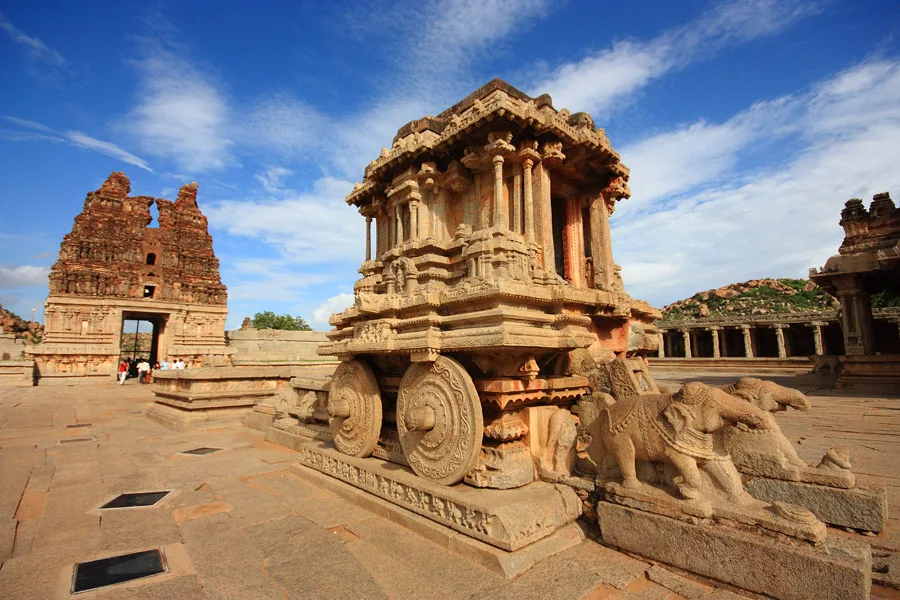The 57 centrally protected monuments in Hampi are in need of Rs 25 crores in funding to prevent further deterioration. However, over the last five years, the Archaeological Survey of India (ASI) Hampi Circle has only received an average of Rs 1.63 crore annually from the Union government for essential conservation work.
Due to a lack of funds and irregular disbursement from the Union Government, conservation and restoration projects started a decade ago remain incomplete. Shortage of funding is not only the impacting ASI-protected monuments in Hampi but also those overseen by the State’s Department of Archaeology, Museums, and Heritage (DAMH).
Hampi’s 236 sq km world heritage site includes 57 groups of monuments (75 structures) managed by the ASI, as well as some under DAMH, and over a thousand non-notified monuments.
Locals hold the ASI responsible for the recent collapse of a section of Salu Mantapa near the Virupaksha temple caused by heavy rainfall. Although renovation work on the site began in 2019, officials only partially completed it. The work was scheduled to be completed in a year.
Similarly, the renovation of the Krishna temple, which began in 2014, remains unfinished due to insufficient funding. Apart from Krishna Temple, other temple complexes such as Vijaya-Vittala and Achyutaraya, and the Bazaar area are in urgent need of funds.
“Our internal study says we need at least Rs 25 crore to restore the gopuras of temples, mantapas and other ASI-protected monuments. As funds are a constraint, the ASI has taken up only maintenance and minor repairs to prevent further degradation of the monuments,” a senior ASI officer told Deccan Herald.
However, locals and conservation experts attribute Hampi’s problems to a lack of long-term vision, shortage of funds, and failure to prioritise work.
With this never-ending battle for funding and lack of upkeep, Hampi may eventually be at risk of losing its UNESCO World Heritage Site (WHS) tag or worse its centuries-old precious heritage.
Group of Monuments in Hampi
The Group of Monuments at Hampi, a UNESCO WHS. They are located in Karnataka, India. These monuments are the remains of the Vijayanagara Empire, which flourished in the 14th to 17th centuries. Some of the most notable monuments and sites include:
Virupaksha Temple: One of the oldest and principal temples in Hampi, dedicated to Lord Shiva. It is still used for worship and features a towering gopuram (gateway tower).
Vittala Temple: Famous for its exceptional architecture and iconic stone chariot. The temple complex is known for its musical pillars that produce sound when tapped.
Hampi Bazaar: An ancient market area in front of the Virupaksha Temple. It was once a bustling marketplace during the Vijayanagara period.
Hemakuta Hill Temples: A cluster of ancient temples located on Hemakuta Hill, offering a panoramic view of Hampi. These temples are known for their unique style and architecture.
Achyutaraya Temple: This temple complex is dedicated to Lord Tiruvengalanatha, a form of Vishnu and Situated between the Gandhamadana and Matanga hills.

Lotus Mahal: A stunning example of Indo-Islamic architecture, the Lotus Mahal served as a pleasure pavilion within the Zenana Enclosure (a secluded area for royal women).
Queen’s Bath: A grand bathing complex that features an ornate arched corridor, balconies, and a central pool, believed to have been used by the royal women.
Elephant Stables: A long building with a series of domed chambers, these stables were used to house the royal elephants. The architecture reflects a blend of Hindu and Islamic styles.
Riverside Ruins: There are numerous ruins along the banks of the Tungabhadra River, including temples, carvings, and inscriptions that highlight the religious and cultural life of the Vijayanagara period.

These monuments collectively represent the architectural ingenuity and cultural grandeur of the Vijayanagara Empire. Hampi’s unique landscape, dotted with boulders and lush greenery, adds to the mystical charm of this historical site.
